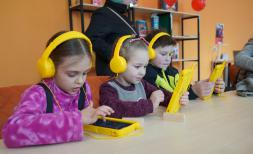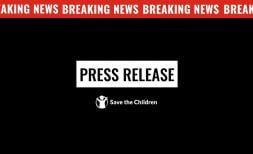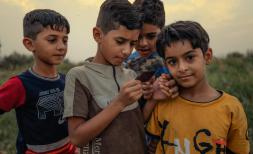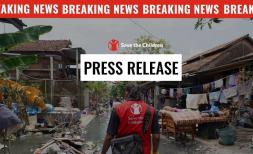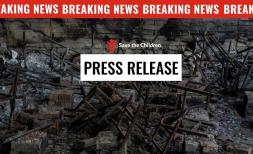Child refugees across the world draw their hopes and horrors
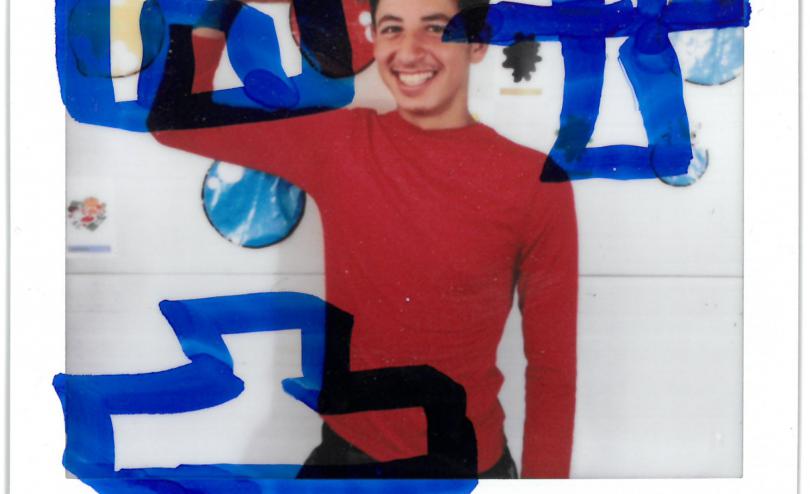
- Some 35 million children have been driven from their homes by conflict – the highest number on record [i]
- 1 in 5 children - 420 million globally - live in a conflict-affected area [ii]
- Child refugees from the world’s worst conflicts draw their fears and dreams
To mark World Refugee Day, Save the Children is releasing a powerful series of Polaroid images from children living in three of the largest refugee settlements in the world.
Conflict has driven millions of children from their homes and their countries of Syria, Myanmar and the Democratic Republic of Congo, forcing them to rebuild their lives in entirely new surroundings. Despite the horrors they’ve endured and the challenges they face, their optimism for their future remains.
In a series of workshops that Save the Children ran with child refugees living in Jordan, Bangladesh and Uganda, their portraits were captured using Polaroid cameras and they were then invited to draw their hopes and dreams for the future.
The resulting drawings show not only loss and sadness, but also the resilience and determination of the children. They describe both the trauma of losing loved ones and having to flee their homes because of fighting, and what they want to be when they grow up, whether to become doctors, footballers or teachers.
Beaufret*,14, drew the horrors he witnessed in the Democratic Republic of Congo before he and his family fled to Uganda.
"Here is my house. Here is the person who cut my father. Here are the others, already dead. We are jumping over them while we are running. You can see the blood when they are dead...
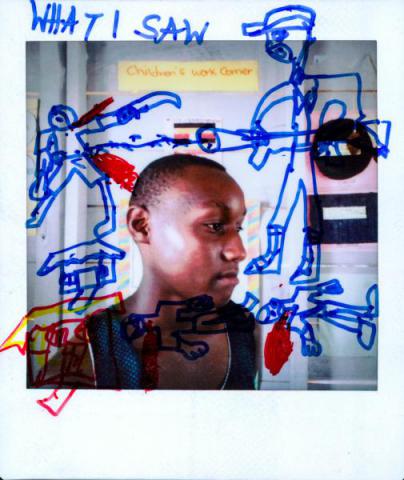
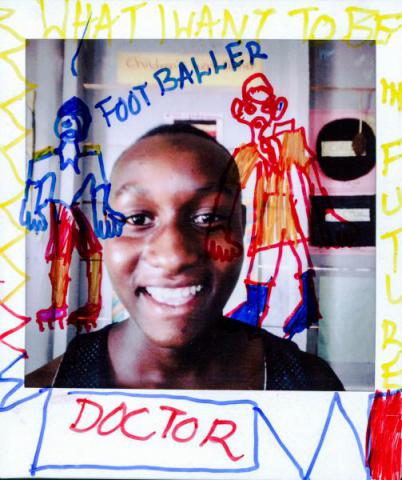
Despite his tragedies, Beaufret*’s other photos reflect his tenacity and hope for his future:
“Here I am standing and the local doctors when we are helping people. Here we are finished now in the hospital, we are now playing football."
Hasina*, 13, is a Rohinyga refugee girl living with her parents and four siblings in Cox’s Bazar, Bangladesh. She likes to make flowers and learn handicrafts and her favourite subject is Burmese because it reminds her of home.
“I was afraid of ghosts when I first came to the camp because they make the people senseless and sometimes crazy. Ghosts are what dead people become.”

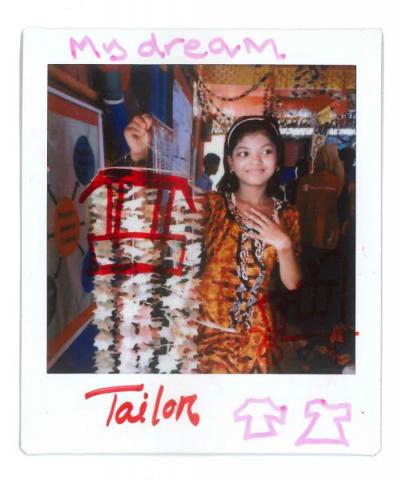
“I want to be a tailor when I am older and to make my own clothes and I can use the money I make [tailoring] to get treatment if I became ill and to help my family.”
Omar*, 15, is from Daraa Syria and his lived half his life in Za’atari refugee camp, Jordan. He says he was very happy in Syria but his family had to leave because they were close to a lot of death and their house was destroyed.
“I have drawn a doctor because this is what I want to be – I want to build a hospital and call it Syria. My dad hopes I will become a doctor. I also want to be a footballer – here you can see my fans chanting my name. I also, want to help all the refugees in the future. Like provide aid for them and help them access education because I’m a refugee too.”
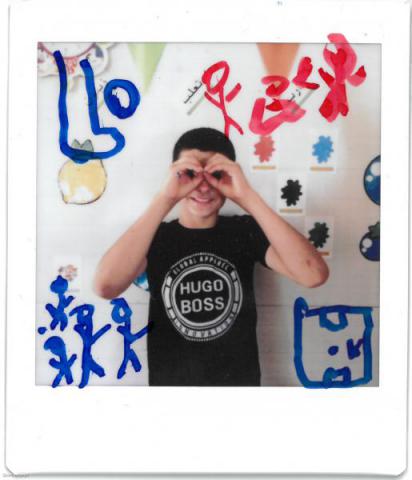
The world is currently experiencing the highest levels of forcible displacement on record. Every two seconds a new person becomes displaced and children are disproportionally affected by the crisis. Latest statistics show an unprecedented 70.8 million people around the world – more than the population of the United Kingdom - have been forced from their homes as a result of conflict or persecution, including around 35 million children.[iii]
Renewed crises in the Democratic Republic of Congo and Myanmar, along with the on-going conflict in Syria have fuelled the overall rise in the displaced and refugee population.
People from these three countries account for the highest number of refugees globally, including: 5.44 million Syrians[iv], 900,000 [v] Rohingya and 850,000 [vi] Congolese. These numbers do not include those that have been forcibly displaced within their own country.
Save the Children helps child refugees from the DRC, Syria and Myanmar through the provision of food rations, psycho-social support, education programmes, child friendly spaces, and health centres.
Syria – Za’atari Refugee Camp, Jordan
- Syria’s 8-year conflict has resulted in 6.2 million[vii] internally displaced and 5.44 million refugees.[viii]
- Most refugees have sought safety in Turkey, Jordan and Lebanon.
- More than 650,000 Syrians have registered as refugees in Jordan[ix], around half of them are children.
- Less than half of Syrian refugee children in Jordan are in education.
- Girls are at risk of early or forced marriage as a result of poverty and the fear of sexual violence.
Myanmar – Cox’s Bazar, Bangladesh
- Renewed violence against the Rohingya minority in Myanmar in August 2017 resulted in a wave of more than 740,000 people crossing into neighbouring Bangladesh.[x]
- There are nearly 1 million Rohyinga refugees and the vast majority have found refuge in Cox’s Bazar - home to the largest refugee settlement in the world.
- As of April 2019, 902,000 Rohingya refugees live in 35 congested camps in Cox’s Bazar and more than 55 per cent, or nearly 500,000, are children.[xi]
- 23% of Rohingya refugee children in Bangladesh aged 3-14 have no access to regular learning opportunities.
- Only 7 in 100 children and youth aged 15-24 have access to education.
Democratic Republic of Congo – Kyaka Refugee Camp, Uganda
- After decades of on-going violence, an estimated 4.5 million people are internally displaced within the Democratic Republic of Congo and nearly 850,00 are refugees [xii]
- In 2018, 120,000 Congolese refugees fled to Uganda [xiii] and more continue to arrive. Uganda is already hosting the most refugees in Africa – more than 1.25 million [xiv] More than half are out of school [xv].
- Militias routinely abduct, recruit and abuse children - both boys and girls. Children are killed and made to commit atrocities on the battlefield, forced into sexual slavery and exploited.
- 2017 saw the highest level of verified child casualties on record, and the highest level of recruitment of child soldiers for nearly a decade.
ENDS
NOTES TO EDITORS:
Cox’s Bazar, Bangladesh
Save the Childrenis one of the leading International NGOs in Cox’s Bazar, having reached more than 730,000 Rohingya and members of the host community since the start of the crisis. Save the Children has more than 2,000 staff and volunteers supporting our programs in child protection, access to education, health and nutrition, water and sanitation services, as well as distribution of shelter and food items. As part of our child protection program, we have set up over 90 child and girl friendly spaces, supporting over 50,000 children with a safe space to play, recover and be children again. We are running awareness sessions with community leaders, parents and children to help protect children from issues like trafficking, child labour and child marriage. We are providing case management to both children and their families through assessing children`s protection risks and developing individual case plans. We are also providing Family Tracing and Reunification support to children that have been separated from their families. We have established strong community-based networks like child protection committees and adolescent groups to ensure at-risk children are referred to the appropriate services. And we are providing children with vital psychosocial support and making referrals to mental health and psychosocial support services.
Za’atari, Jordan
Save the Children has reached more than half a million Syrian children in Jordan with vital help – distributing food and essential supplies initially, and providing health and psychosocial support, education, vocational training and child protection work. Our vocational work is with boys aged 16-18 (tailoring, hairdressing, etc) and to help children return to learning, we are also running education programmes and safe spaces. Our education programmes include classes in Arabic, maths and English for children aged 8-16, plus work with kids aged 3-4 in our three early learning centres. Our child protection programme: Safe you, Safe Me, features psychosocial support designed to build the resilience and emotional wellbeing of vulnerable children with traumatic memories of the conflict in Syria. Our team runs six protection hub centres in Za'atari, five of which feature the Arsenal Coaching for Life programme, which is for girls and boys aged 8-18. The flagship programme is designed to build children’s courage and inner strength through football, and to empower and protect children affected by conflict and violence – helping them cope with daily struggles and providing them with skills for a better future. This includes specifically targeting girls who are at risk of child marriage.
Kyaka refugee settlement, Uganda
In Uganda, Save the Children works to support Congolese refugee children who have been victims of the conflict in a number of ways. We run Child Friendly Spaces where children can have a safe place to play, learn and get psychosocial support; our case workers identify vulnerable children and ensure they get the right help, such as placing unaccompanied children with foster families; and we run early learning and accelerated education programmes. We aim to scale up these programmes to reach more children but the response is critically underfunded.
[ii] Save the Children. Stop the War on Children: Protecting Children in 21 Century Conflict. (London: 2019)
[iii] See Global Trends 2018 UNHCR, reporting about half of all displaced people are children.
[xiii] https://reliefweb.int/sites/reliefweb.int/files/resources/69349.pdf
[xiv] https://data2.unhcr.org/en/country/uga?secret=unhcrrestricted
